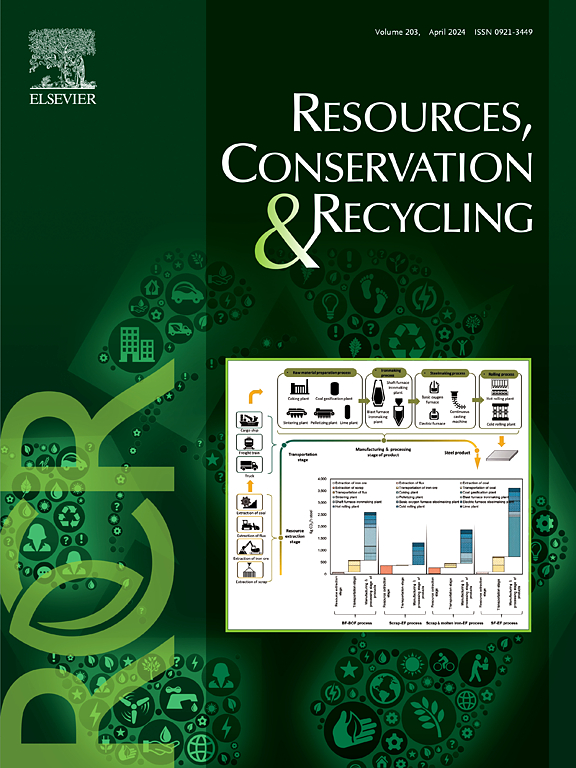建筑材料的需求和贸易如何影响温室气体排放
IF 10.9
1区 环境科学与生态学
Q1 ENGINEERING, ENVIRONMENTAL
引用次数: 0
摘要
建筑材料产生了全球近三分之一的碳排放,但传统的核算方法只反映了其中的一小部分。利用EXIOBASE 25年的数据,我们追踪了水泥、钢铁、金属和塑料等建筑供应链的排放情况。尽管全球建筑需求增长了近两倍,但地区格局却存在显著差异。尽管通过采用可再生能源和排放交易增加了需求,但欧盟还是减少了排放量,而推动全球经济增长的中国建筑业繁荣显著增加了国内排放量。与资源开采和废物处理相比,制造业对隐含排放的贡献最大。增加对海上生产的依赖破坏了国内的排放控制战略,突出了扩大碳边界调整机制的必要性。如果没有解决全供应链排放的政策,即使是积极的气候倡议也会因碳泄漏而受到损害,从而形成与全球气候目标不相容的排放轨迹。本文章由计算机程序翻译,如有差异,请以英文原文为准。

How demand for and trade of construction materials affects greenhouse gas emissions
Construction materials generate nearly one-third of global carbon emissions, yet conventional accounting captures only a fraction of this impact. Using EXIOBASE data spanning 25 years, we tracked emissions across construction supply chains for cement, steel, metals, and plastics. While global construction demand nearly tripled, regional patterns diverged significantly. The EU reduced emissions despite increased demand through renewable energy adoption and emissions trading, while China's construction boom—driving most global growth—significantly increased domestic emissions. Manufacturing contributes most to embodied emissions compared to resource extraction and waste treatment. Increased reliance on offshore production undermines domestic emission control strategies, highlighting the need for expanded carbon border adjustment mechanisms. Without policies addressing full supply chain emissions, even aggressive climate initiatives will be compromised by carbon leakage, creating an emissions trajectory incompatible with global climate targets.
求助全文
通过发布文献求助,成功后即可免费获取论文全文。
去求助
来源期刊

Resources Conservation and Recycling
环境科学-工程:环境
CiteScore
22.90
自引率
6.10%
发文量
625
审稿时长
23 days
期刊介绍:
The journal Resources, Conservation & Recycling welcomes contributions from research, which consider sustainable management and conservation of resources. The journal prioritizes understanding the transformation processes crucial for transitioning toward more sustainable production and consumption systems. It highlights technological, economic, institutional, and policy aspects related to specific resource management practices such as conservation, recycling, and resource substitution, as well as broader strategies like improving resource productivity and restructuring production and consumption patterns.
Contributions may address regional, national, or international scales and can range from individual resources or technologies to entire sectors or systems. Authors are encouraged to explore scientific and methodological issues alongside practical, environmental, and economic implications. However, manuscripts focusing solely on laboratory experiments without discussing their broader implications will not be considered for publication in the journal.
 求助内容:
求助内容: 应助结果提醒方式:
应助结果提醒方式:


